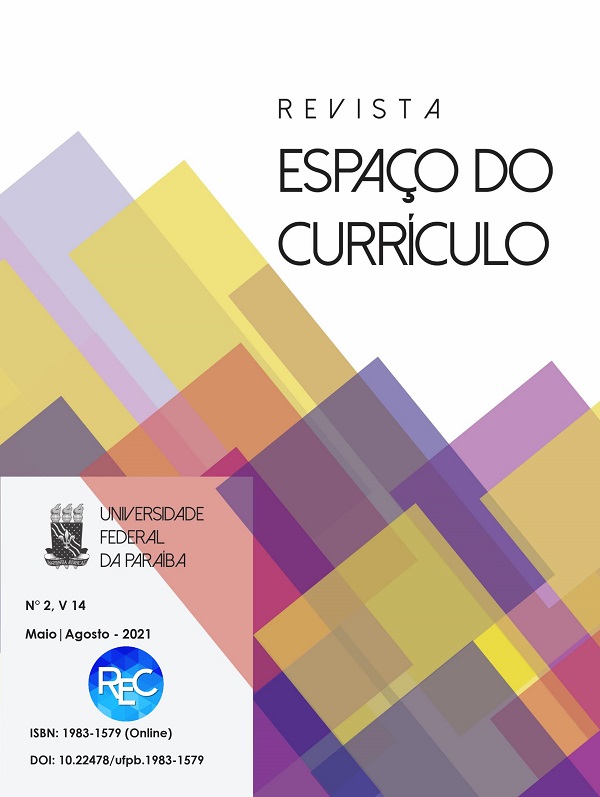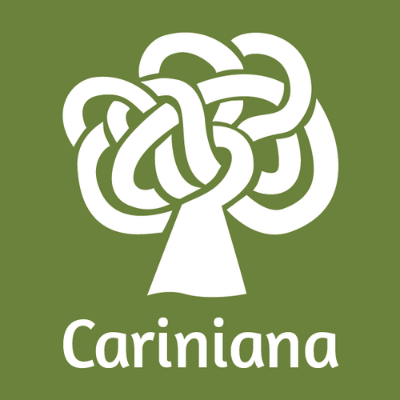A BRIEF DISCUSSION ON THE PRESENCE OF STATISTICS IN THE CURRICULUM OF ELEMENTARY EDUCATION
DOI:
https://doi.org/10.22478/ufpb.1983-1579.2021v14n2.57471Keywords:
Statistics, Teaching Statistics, PCN, BNCCAbstract
Statistical knowledge is essential to perform different daily activities, however, in order for the individual to be able to use statistics, he must develop skills of reading and interpreting data, in addition to the ability to establish relationships, make assumptions and understand information related to uncertainty, unpredictability or variability. In this context, this research proposes to discuss the main challenges and perspectives on the teaching of statistics arising from the implementation of the PCN and bncc. The methodological approach used in this study is documentary bibliographic and has exploratory data analysis (AED) as its theoretical framework. It is worth pointing out that there have been advances over the years with the incorporation of statistics in the curriculum in elementary school. From this inclusion, other advances can be observed, such as: the exploration of the different representations (table, graphs, flowcharts); the realization and planning of practical research involving different categorical variables that enable the opening of reflections and the development of competencies such as statistical thinking and the understanding of interdisciplinary relationships. It is pointed out as one of the challenges to expand the work with Statistics in Basic Education the investment in teacher education in the perspective of empowering them in favor of favoring the teaching and learning process.
Downloads
Metrics
References
BRASIL. Ministério da Educação. Parâmetros Curriculares Nacionais (PCN): matemática. Brasília, DF, 1997.
BRASIL. Ministério da Educação. Parâmetros Curriculares Nacionais (PCN): matemática. Brasília, DF, 1998.
BRASIL. Ministério da Educação. Base Nacional Comum Curricular (BNCC): Educação é a Base. Brasília, DF, 2017
BRASIL. Relatório SAEB 2017. Brasília, DF: Instituto Nacional de Estudos e Pesquisas Educacionais Anísio Teixeira, 2019.
BORBA R.; MONTEIRO C.; GUIMARÃES G.; COUTINHO C.; KATAOOKA V.Y. Educação Estatística no ensino básico: currículo, pesquisa e prática em sala de aula. EM TEIA - Revista de Educação Matemática e Tecnológica Ibero-americana -, v.2, n.2, 2011.
CASTRO, J. B.; CASTRO-FILHO, J. A. Desenvolvimento do pensamento estatístico com suporte computacional. Educação Matemática Pesquisa. São Paulo, v.17, n.5, p. 870-896, 2015.
CAZORLA, I. M.; UTSUMI, M. C. Reflexões sobre o ensino de Estatística na Educação Básica. In: CAZORLA, I. M.; SANTANA, E. R. dos S. (Orgs.). Do Tratamento da Informação ao Letramento Estatístico. Itabuna-BA: Via Litterarum v.1, p. 9-18, 2010.
CAMPOS, C. R.; WODEWOTZKI, M. L. L.; JACOBINI, O. R. Educação Estatística: Teoria e prática em ambientes de modelagem matemática. Belo Horizonte: Autêntica Editora, v.1, n.1, p.1-143, 2011 (Coleção Tendências em Educação Matemática).
GAL, I. Adults Statistical Literacy: meanings, components, responsibilities. International Statistical Review, v.70, n.1, p 1-25, 2002
INAF Brasil. Relatório anual do índice de Alfabetismo Funcional da População Brasileira entre 15 e 64 anos. ONG Ação Educativa e Instituto Paulo Montenegro (Org.). n.18. p.2-22, 2019.
LOPES, C. A. E. O ensino da estatística e da probabilidade na educação básica e a formação dos professores. Revista Cad. Cedes, Campinas.v.28 n.74, p. 57-73, 2008.
LOPES, C. A. E. Os desafios para educação estatística no currículo de matemática. In: Lopes, C. E.; Coutinho, C. Q. S.; Almouloud, S. A. (Org.) Estudos e reflexões em educação estatística. Campinas (SP): Mercado de letras, p.47-64, 2010.
MORGENTHALER, S. Exploratory data analysis. Wiley Interdisciplinary Reviews: Computational Statistics. v. n.1, p. 33- 44, 2009.
MENDONZA, L. P.; SWIFT, J. Why teach statistics and probability: a rationale. In: Shulte, A.P.; Smart, J.R. (Orgs). Teaching statistics and probability. Reston: Yearbook National Council of Teachers of Mathematics, v.1,n.3, p. 90-100, 1981.
PONTE, J. P.; FONSECA, H. Orientações curriculares para o ensino da estatística: Análise comparativa de três países. In: Encontro sobre o Ensino e Aprendizagem da Estatística. Faculdade de Ciências da Universidade de Lisboa. (PT), p.93-115, 2001.
PONTES, M.M; CASTRO, J.B. A construção do conhecimento Matemático do pedagogo: uma investigação sobre os saberes para a prática pedagógica com Estatística. JIEEM. v.13, n.3, dez.2020.
SOUZA, L. O. O desenvolvimento profissional de professores em estatística: um projeto multidimensional de formação colaborativa. 245f. Tese (Doutorado em Ensino de Ciências e Matemática) Universidade Cruzeiro do Sul, São Paulo, São Paulo, 2013.
Downloads
Published
How to Cite
Issue
Section
License
Copyright (c) 2021 Curriculum Space Journal

This work is licensed under a Creative Commons Attribution 4.0 International License.
By submitting an article to Curriculum Space Journal (CSJ) and having it approved, the authors agree to assign, without remuneration, the following rights to Curriculum Space Journal: first publication rights and permission for CSJ to redistribute this article. article and its metadata to the indexing and reference services that its editors deem appropriate.
















